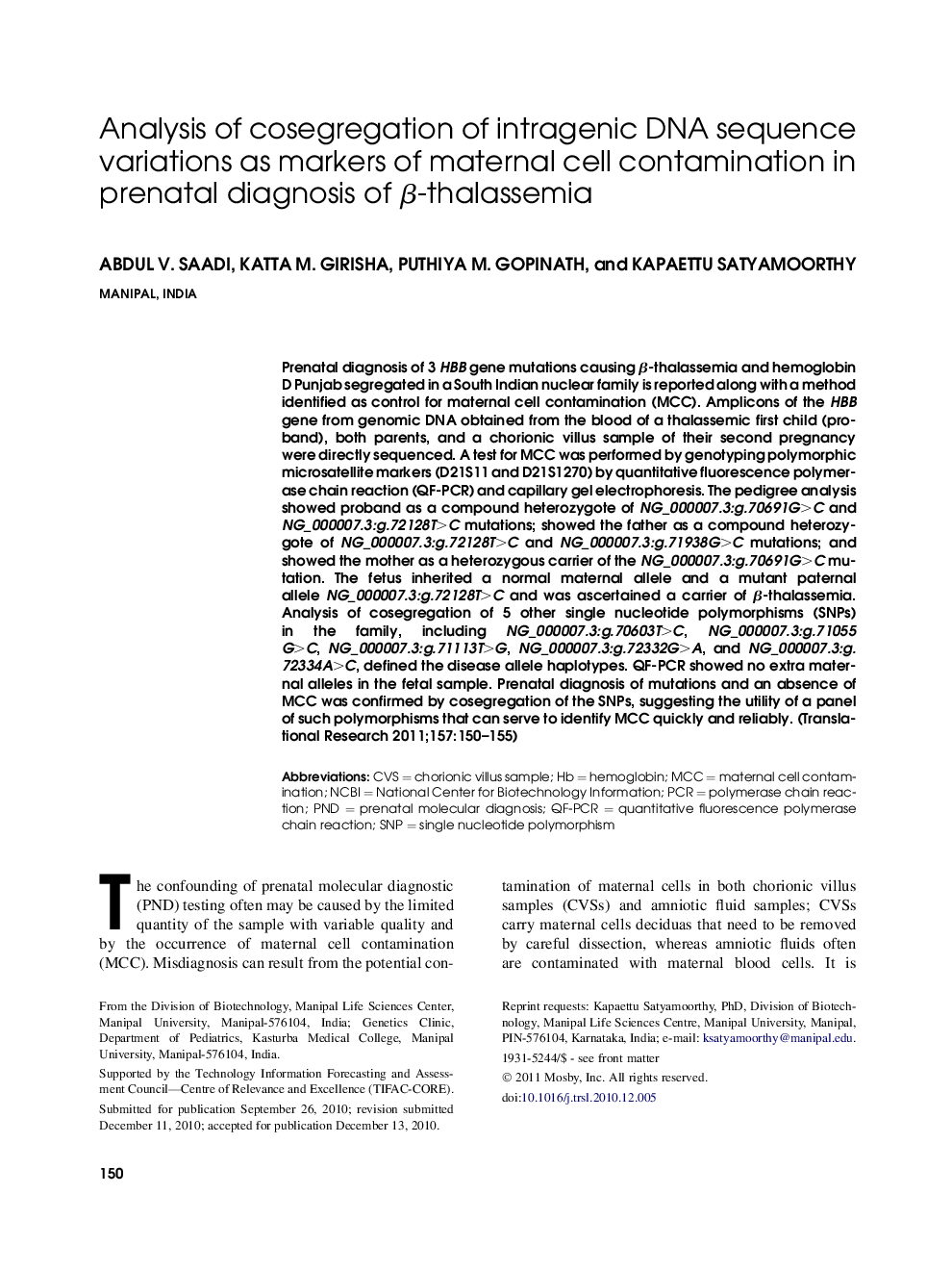| Article ID | Journal | Published Year | Pages | File Type |
|---|---|---|---|---|
| 3840740 | Translational Research | 2011 | 6 Pages |
Prenatal diagnosis of 3 HBB gene mutations causing β-thalassemia and hemoglobin D Punjab segregated in a South Indian nuclear family is reported along with a method identified as control for maternal cell contamination (MCC). Amplicons of the HBB gene from genomic DNA obtained from the blood of a thalassemic first child (proband), both parents, and a chorionic villus sample of their second pregnancy were directly sequenced. A test for MCC was performed by genotyping polymorphic microsatellite markers (D21S11 and D21S1270) by quantitative fluorescence polymerase chain reaction (QF-PCR) and capillary gel electrophoresis. The pedigree analysis showed proband as a compound heterozygote of NG_000007.3:g.70691G>C and NG_000007.3:g.72128T>C mutations; showed the father as a compound heterozygote of NG_000007.3:g.72128T>C and NG_000007.3:g.71938G>C mutations; and showed the mother as a heterozygous carrier of the NG_000007.3:g.70691G>C mutation. The fetus inherited a normal maternal allele and a mutant paternal allele NG_000007.3:g.72128T>C and was ascertained a carrier of β-thalassemia. Analysis of cosegregation of 5 other single nucleotide polymorphisms (SNPs) in the family, including NG_000007.3:g.70603T>C, NG_000007.3:g.71055G>C, NG_000007.3:g.71113T>G, NG_000007.3:g.72332G>A, and NG_000007.3:g.72334A>C, defined the disease allele haplotypes. QF-PCR showed no extra maternal alleles in the fetal sample. Prenatal diagnosis of mutations and an absence of MCC was confirmed by cosegregation of the SNPs, suggesting the utility of a panel of such polymorphisms that can serve to identify MCC quickly and reliably.
